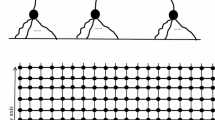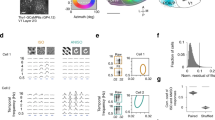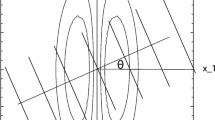Abstract.
A neural model is proposed for the spatiotemporal properties of simple cells in the visual cortex. In the model, several cortical cells are arranged on a ring, with mutual excitatory or inhibitory connections. The cells also receive excitatory inputs either from lagged and nonlagged cells of the lateral geniculate nucleus in one setting or from nonlagged cells in the other. Computer simulation shows that the cortical cells have spatiotemporally inseparable receptive fields in the former setting and separable fields in the latter; spatial profiles at a given time in the spatiotemporal fields are described with a Gabor function whose phase parameter varies regularly from 0 to 2π with rotation along the ring; the inseparable cells have directional selectivity as observed physiologically.
Similar content being viewed by others
Author information
Authors and Affiliations
Additional information
Received: 13 November 1995 / Accepted in revised form: 1 July 1997
Rights and permissions
About this article
Cite this article
Hamada, T., Yamashima, M. & Kato, K. A ring model for spatiotemporal properties of simple cells in the visual cortex. Biol Cybern 77, 225–233 (1997). https://doi.org/10.1007/s004220050383
Issue Date:
DOI: https://doi.org/10.1007/s004220050383




